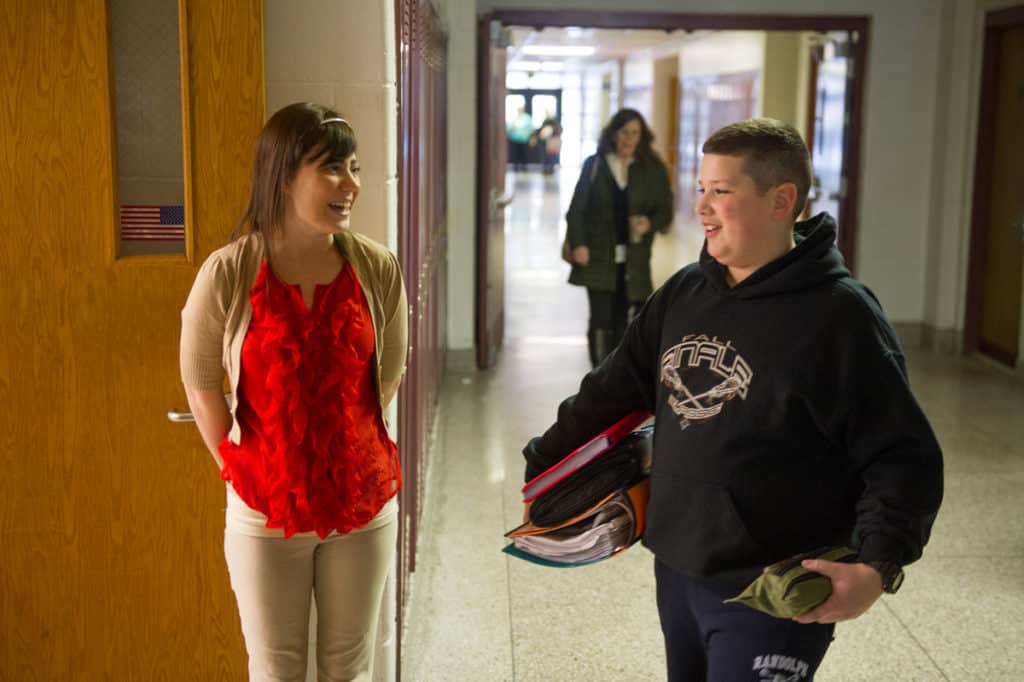
It’s July. You’re in that sweet spot between packing up your classroom for the summer and unpacking it again for the new school year. You’re not ready for summer to end, but you’ve just gotten back from your first Responsive Classroom four-day course and you find yourself thinking about your new students. Or maybe you just finished reading that copy of The Power of Our Words that your colleague lent you back in April now that you’ve had some time away from grading, laminating, and lesson planning.
Or maybe you’re actually reading this in November. You’re feeling invigorated from the Responsive Classroom Teachers Conference, and you finally have a few moments to go back and read those newsletter articles you bookmarked in July.
No matter where in the year you are, when you’re feeling ready to start using the Responsive Classroom approach, that’s the right time to begin! But where do you start?
“It’s all about knowing your kids and what they need,” says Nicole Doner, Responsive Classroom consulting teacher.
That midmorning eighth grade English class with drooping eyelids and growling stomachs is going to need something different than the sixth grade Art class sword-fighting with their paintbrushes. Last year’s first graders were literally falling out of their chairs in giggle fits, but this year’s class is sensitive and more likely to snuggle up on the rug than sit in a chair.
Though the focus of which Responsive Classroom practices you try first will be different depending on the class, Doner suggests starting with Morning Meeting (for elementary school) or Responsive Advisory Meeting (for middle school), “the grounding component to meet students’ needs in all four of the domains from the get-go.”
Doner taught 5th grade for 16 years in urban and suburban school districts in Vermont before becoming a full time Responsive Classroom consulting teacher. She took her first Responsive Classroom course the summer after her first year teaching, returned to her classroom in September with her students’ needs in mind, and “never looked back.”
What her particular students needed, Doner remembers, was structure. Her students were diverse, coming literally from many different places. Some had grown up in Burlington not far from the school, others were refugees, and many were living in poverty. The instability many faced outside of school was echoed in a building with high teacher turnover. Doner began with Morning Meeting to build community and provide a safe, purposeful beginning to every school day.
The Responsive Classroom Morning Meeting structure helped Doner’s students transition more smoothly from home to school and develop listening, speaking, and other essential skills for learning together.
For teachers, Morning Meeting and Responsive Advisory Meeting provide the perfect window of time in which to start using practices like teacher language and Interactive Modeling. (“Teacher language permeates everything,” says Doner.) Try setting a goal of having a twenty minute Morning Meeting each day, or even just a few times a week. These meetings are a great place to start—modeling routines or new skills, using reinforcing language to acknowledge student successes, and offering redirecting language to help them stay on track.
Starting small will make it easier and more natural to integrate these practices into the rest of the school day. When you’re ready, try weaving Interactive Modeling into a reading lesson or make a point to use reinforcing language at least three times throughout the day when you “catch” students making positive efforts.
“Be kind to yourself,” Doner says of getting started. “Allow yourself to make mistakes and grow.”
As you try on these “new-to-you” practices, you might feel a bit unsteady at times. There’s no need to pretend to be an expert in front of your students. Instead, remember that you’re modeling what it looks like to be a lifelong learner. You might even want to explain that you’re trying out a new way of talking with them. Then, when you think you made a mistake, you can acknowledge it aloud and try again.
When working with students to set learning goals for the year or the quarter, consider making and sharing a goal of your own. Maybe you’ll use Interactive Modeling to teach expectations around a new greeting each week, for example, and then try to use reminding language to help students meet those expectations. Invite a colleague to observe or join Morning Meeting to give feedback on your progress (and offer to do the same for them). Look for signs of your new approach reflected in student language, engagement, and academic behaviors.
Don’t worry about reinventing the wheel either. We have lots of resources with Morning Meeting (and Responsive Advisory Meeting) plans and ideas. Some tried and true tips to get you started:
Above all, remember that change takes time. And during that time, you are serving as an important, positive model for your students.